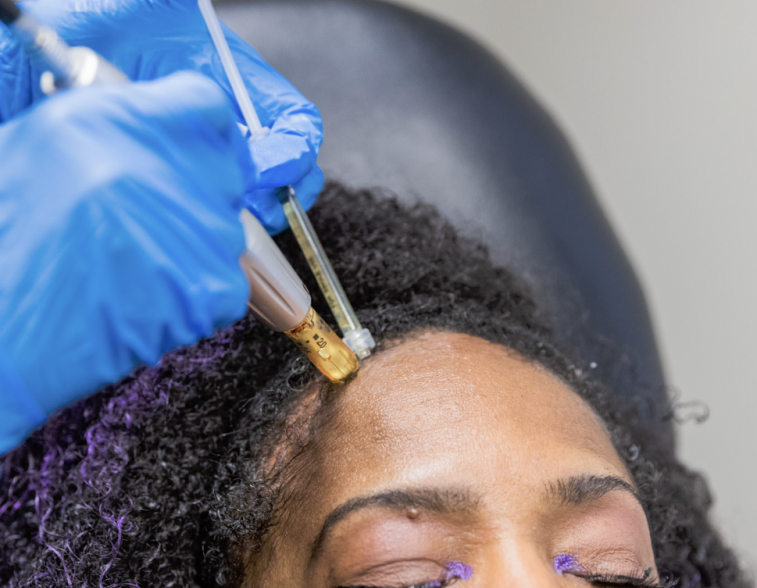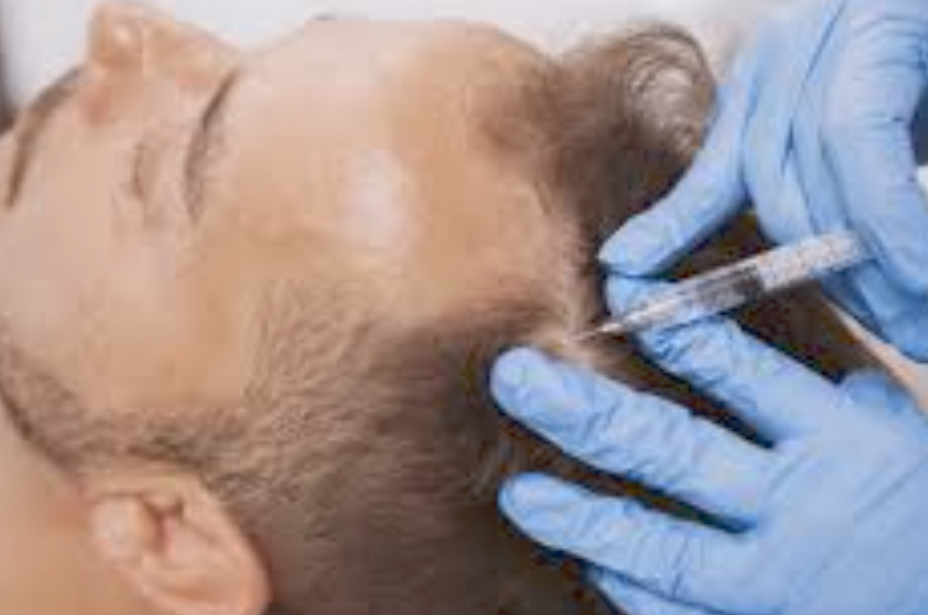I have always been intrigued by the science behind hair growth and treatments. One area that has gained a lot of interest is the use of polynucleotides. These bioactive molecules, derived from DNA, have been explored for their ability to promote tissue regeneration and support hair loss treatments. This article explains how polynucleotides work for hair growth, reviews their benefits and efficacy, and looks at treatment delivery, safety, and costs.

Understanding Polynucleotides
Polynucleotides consist of chains of nucleotides taken from DNA. When injected into the scalp, these molecules help create an environment where hair follicles can thrive by stimulating cellular repair, activating resting hair follicles, and giving a boost to blood flow in the scalp.
Scientific studies indicate that the regenerative properties of polynucleotides play a key role in improving hair growth by triggering cell renewal to foster a healthier scalp. Research from various university studies has linked improved scalp conditions with increased hair density and reduced shedding.
Mechanisms of Action for Hair Growth
The process by which polynucleotides improve hair growth involves several biological mechanisms. The key mechanisms include:
- Stimulating Cellular Repair: Polynucleotides encourage the regeneration of cells in the scalp. This helps repair damaged tissue and creates a healthier environment for hair follicles.
- Activating Dormant Hair Follicles: Research shows these molecules can wake up hair follicles that are in a resting state. Once activated, these follicles are more likely to enter an active growth phase, which may lead to the development of new hair.
- Improving Scalp Health: By giving a boost to blood flow and reducing inflammation, polynucleotides contribute to overall scalp wellness. Better circulation means that follicles receive more of the nutrients they need.
- Strengthening Hair Follicles: These molecules help fortify existing hair shafts. With stronger follicles, there is less hair shedding and breakage, which over time contributes to a fuller look.
- Increasing Collagen Production: Collagen production is very important for scalp strength. Higher collagen levels support hair follicles by providing a robust framework for hair growth.

Benefits of Polynucleotide Hair Treatments
Polynucleotide treatments offer several practical benefits for individuals experiencing hair thinning and loss. Although improvements are usually gradual and require a series of sessions, many users notice significant changes. Some of the key benefits include:
- Thicker and Healthier Hair: Many users have seen improvements in hair thickness and texture. The treatments help step up the quality of hair, giving it a fuller appearance over time.
- Reduced Hair Loss: One of the most attractive aspects of this therapy is its ability to slow down hair loss. Regular sessions can help reduce the thinning process and may even reverse it in some cases.
- Improved Scalp Health: Better scalp conditions are achieved as blood flow is given a boost and inflammation is reduced. A healthy scalp lays the best foundation for sustainable hair growth.
- Minimally Invasive: Unlike more invasive procedures, polynucleotide treatments are performed through small injections, with minimal discomfort or downtime.
- Long-lasting Results: The effects of polynucleotide therapy can last for a significant period. Although not permanent, continued sessions help maintain the results for long-term hair health.
Many patients compare these benefits to other hair restoration techniques such as platelet-rich plasma (PRP) therapy. While both approaches use the body’s natural regenerative abilities, their methods differ slightly. In some cases, a combination of therapies can provide the best overall results.
🧪 Treatment Procedure & Delivery

- Administration: PN injections are delivered directly into the scalp using fine needles, typically in a clinical setting by trained professionals.
- Session Frequency: A standard regimen involves 4–6 sessions spaced 3–4 weeks apart.
- Maintenance: To sustain results, maintenance sessions are recommended every 6–12 months.
- Combination Therapies: PN injections are often combined with treatments like low-level laser therapy or platelet-rich plasma (PRP) to enhance efficacy Study: Thanasarnaksorn et al (2025)
✅ Safety & Side Effects
- Common Reactions: Temporary redness, swelling, or mild bruising at the injection sites are typical and usually resolve within a few days .
- Serious Side Effects: Rarely, patients may experience headaches or mild rashes, which are generally short-lived .
- Safety Profile: PN therapy is considered safe with a low risk of adverse effects, as the polynucleotides are naturally occurring substances in the body.
💰 Cost Considerations
- Treatment Cost: Prices vary based on clinic and location; however, PN therapy is generally more affordable than PRP treatments.
- Insurance: Most insurance plans do not cover cosmetic procedures like PN injections, so patients should be prepared for out-of-pocket expenses.
🔬 Comparing PN Injections with PRP Therapy

Frequently Asked Questions
Below are a few common questions regarding polynucleotide and PRP hair treatments:
Question: Do Polynucleotides actually regrow hair?
Polynucleotides help improve scalp health, reduce inflammation, and support hair follicle regeneration, which may lead to increased hair density and thickness. Early studies suggest they can aid hair regrowth, especially in cases of androgenetic alopecia, but results vary by individual.
Question: How much do Polynucleotide treatments cost?
Costs typically range from $300–$600 per session, depending on the clinic and location. Most patients require 3–6 sessions, and maintenance treatments may be recommended.
Question: How long do the effects of Polynucleotides last?
Results can last 6–12 months, with many patients seeing continued improvement when maintenance sessions are performed every 6–12 months.
Question: Do Polynucleotides speed up hair growth?
Yes, they can help accelerate hair growth by enhancing the scalp environment and stimulating follicle activity. While not instant, improvements are often seen within 8–12 weeks.
Final Thoughts
Polynucleotide therapy offers an interesting approach to tackling hair loss. By stimulating cellular repair, activating dormant hair follicles, and giving a boost to overall scalp health, these molecules have shown the ability to contribute to thicker, healthier hair. Although the treatment usually requires multiple sessions, it is generally safe and minimally invasive. It is always a good idea to consult with a specialist before beginning any new therapy.
The cost of treatment varies, and it should be considered alongside the expected benefits over time. When compared with PRP treatment, both methods have unique strengths and can sometimes work well together as part of a broader strategy for hair restoration. My research and review of clinical studies lead me to believe that polynucleotides hold promise as an important option in the fight against hair loss.
References
- Thanasarnaksorn W., Limsuchaiwat N., Sirithanabadeekul P et al. (2025). Polynucleotides as a novel therapeutic approach in androgenetic alopecia: an analysis of effectiveness and safety Arch Dermatol Res 2025 Feb 14;317(1):399
- Lee S H., Zheng Z., Khang J S et al (2015). Therapeutic efficacy of autologous platelet-rich plasma and polydeoxyribonucleotide on female pattern hair loss Wound Repair Regen 2015 Jan-Feb;23(1):30-6
- Fatima K., Ovais H., Anwar Z et al (2023). Novel vs. modified platelet-rich plasma therapy for hair loss treatment: a systematic review and meta-analysis Ann Med Surg (Lond) 2023 May 19;85(6):2833-2840

I wonder if this Polynucleotide treatment will work with somebody who has been bald on top for a long time? I would hate to tell him to go and spend all this money, and it doesn’t make much of a difference.
Looks like a great solution for women who have a few bald patches starting to show, as women are not meant to go bald so this will give them a lot of confidence if it works as well as you say it does. If it were me, I wouldn’t mind spending the money if I had a guarantee that it works as well as you say it does.
Thanks Michel – a great question. Polynucleotide treatment is most effective for individuals with active or recently thinning hair follicles. If someone has been completely bald on top for a long time—especially with smooth, shiny scalp—it likely means the follicles are no longer viable, making regrowth with polynucleotides unlikely. However, they may still help improve scalp health or support combination treatments.
Exosome therapy may be more appropriate, as this treatment will reactivate dormant hair follicles and has shown some impressive results for alopecia (balding). I will be writing an article today on this type of therapy, so make sure to have a read!